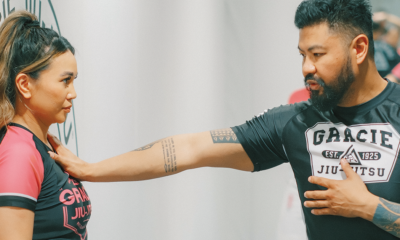Womens Self Defense
Examining the Controversy: The Debate Over Obligation to Retreat Laws

The debate over obligation to retreat laws has been a contentious issue in the United States for many years. These laws, also known as stand your ground laws, allow individuals to use deadly force in self-defense without first attempting to retreat from a dangerous situation. Proponents of these laws argue that they protect individuals’ right to self-defense, while opponents argue that they promote violence and can lead to unnecessary deaths.
One of the main arguments in favor of obligation to retreat laws is that they allow individuals to defend themselves and their loved ones in dangerous situations without fear of legal repercussions. Proponents argue that individuals should not be required to retreat from a threat if they feel that their lives are in danger, and that they have the right to defend themselves with deadly force if necessary. These laws are seen as a way to empower individuals to protect themselves and their families, and to deter criminals from committing violent acts.
On the other hand, opponents of obligation to retreat laws argue that they can lead to an increase in violence and unnecessary deaths. Critics point to cases where individuals have used deadly force in situations that could have been defused without violence, and argue that stand your ground laws encourage a shoot-first mentality. Opponents also argue that these laws disproportionately affect minority communities, where individuals may already face discrimination and bias in the criminal justice system.
The controversy over obligation to retreat laws came to the forefront in 2012 with the high-profile case of Trayvon Martin, a young African American man who was shot and killed by George Zimmerman in Florida. Zimmerman, who claimed self-defense under the state’s stand your ground law, was acquitted of murder charges, sparking widespread protests and calls for reform of these laws. Since then, several states have reexamined their obligation to retreat laws, with some repealing or modifying them in response to public outcry.
In conclusion, the debate over obligation to retreat laws is a complex and contentious issue that highlights the tension between the right to self-defense and concerns about public safety. While proponents argue that these laws empower individuals to protect themselves, opponents worry about the potential for increased violence and discrimination. As the conversation around stand your ground laws continues, it is important for lawmakers and citizens to consider the implications of these laws on public safety and justice for all individuals.
Womens Self Defense
Andrew Tate talking about female on self defence #viral #facts #selfdefense #wild #short
Womens Self Defense
The Legal Landscape for Women: How to Navigate Potential Challenges

In recent decades, the legal landscape concerning women’s rights has undergone significant transformations. However, despite advancements, women still encounter various legal challenges that can impact their rights, opportunities, and overall quality of life. Understanding these challenges and how to navigate them is crucial for women seeking to assert and defend their rights. This article explores key areas of concern and provides guidance on navigating the complexities of the legal landscape.
Key Areas of Legal Concern
1. Employment Law
Discrimination in the workplace remains a pressing issue. Women can face disparities in pay, promotions, and hiring practices.
-
Understanding Your Rights: The Equal Pay Act and Title VII of the Civil Rights Act are foundational laws that prohibit gender discrimination. If you suspect discrimination, document incidents and consider reaching out to an employment lawyer or the Equal Employment Opportunity Commission (EEOC).
- Combating Harassment: Sexual harassment is illegal, and victims have the right to report it. Familiarize yourself with your company’s policies and be aware of the legal recourse available.
2. Family Law
Women often face unique challenges in family law situations, including divorce, custody issues, and domestic violence.
-
Custody and Support: In custody battles, courts are guided by the best interests of the child. It’s essential to present a comprehensive view of your parenting capability. Seeking a family law attorney can provide clarity and direction in these complex situations.
- Addressing Domestic Violence: Women experiencing domestic violence can seek protection orders. Legal assistance can help navigate this process and provide vital resources.
3. Reproductive Rights
Access to reproductive healthcare remains a contentious issue. Women’s rights to make decisions about their own bodies can vary significantly by state and local laws.
-
Understanding Local Laws: Stay informed about the laws in your area regarding reproductive rights, including abortion, contraception access, and parental consent laws.
- Accessing Healthcare: If you face discrimination in accessing healthcare services, consider seeking legal counsel or contacting local advocacy groups.
4. Health and Safety Regulations
Women often face disparities in healthcare access, impacting areas from maternity care to general health services.
- Advocating for Health Rights: Be proactive in understanding your rights regarding health insurance and healthcare access. If you experience discrimination, report it through appropriate channels.
5. Education and Title IX
Title IX is a federal law that prohibits sex-based discrimination in educational programs and activities.
- Ensuring Safe Environments: Schools must provide safe environments free from harassment. If you or someone you know faces discrimination or harassment, it’s essential to report it through school channels and understand your rights under Title IX.
Navigating the Legal System
1. Seek Legal Assistance
Engaging with a qualified attorney can make the navigation process smoother, particularly in complex areas like family law or employment discrimination. Look for attorneys who specialize in women’s issues and are familiar with local laws.
2. Join Support Networks
Connect with organizations dedicated to women’s rights and advocacy. These networks can provide critical resources, information on rights, and avenues for support.
3. Stay Informed
Laws and regulations can change. Subscribe to newsletters from reputable legal organizations or advocacy groups to stay updated on changes that may affect you.
4. Document Everything
If you believe you are facing discrimination or harassment, keep meticulous records. Documentation can serve as vital evidence in legal proceedings.
5. Advocate for Change
Engage in advocacy—whether it’s through voting, participating in marches, or taking part in community discussions. Collective action can lead to meaningful change in legal protections for women.
Conclusion
The legal landscape for women is fraught with challenges, but by understanding your rights and how to advocate for them, you can navigate this landscape more effectively. Engaging with legal professionals, educating yourself, and becoming an advocate for your rights and the rights of others can empower you and help foster a more equitable society. Awareness and action are crucial tools for overcoming obstacles and enhancing the legal protection of women’s rights.
Womens Self Defense
Empower Yourself: The Importance of Self-Defense in College
Absolutely! I’m Jade Tripp, and I’m thrilled to share insights on women’s self-defense and personal protection. Please provide me with the article title you’d like me to tackle, and I’ll dive right in!
-

 Womens Self Defense11 months ago
Womens Self Defense11 months agoNew Legislation Empowers Women to Defend Themselves
-

 Self Defense News1 year ago
Self Defense News1 year agoShe was convicted of killing her abusive boyfriend. Now a Maple Grove woman is home awaiting a new trial.
-

 Self Defense News1 year ago
Self Defense News1 year agoSelf-Defense for All: The new Gracie Jiu-Jitsu Pasadena is for everyone | Online Features
-

 Womens Self Defense1 year ago
Womens Self Defense1 year agoTop 5 Self-Defense Techniques Every Woman Should Know
-

 Womens Self Defense7 months ago
Womens Self Defense7 months agoUnderstanding State-by-State Variation in Self Defense Laws
-

 Womens Fitness1 year ago
Womens Fitness1 year agoXtreme Bodyweight HIIT (Lots of Jumping!) | Joanna Soh (Fio Series)
-

 Womens Preparedness1 year ago
Womens Preparedness1 year ago10 essential skills for surviving in the great outdoors
-

 Womens Preparedness1 year ago
Womens Preparedness1 year agoEmpower Yourself: A Guide to Female Survival Planning






